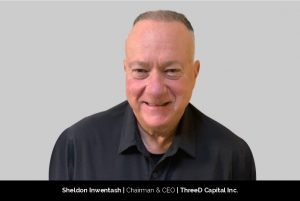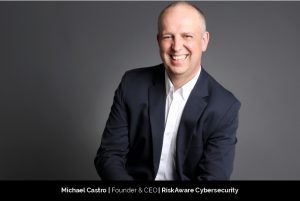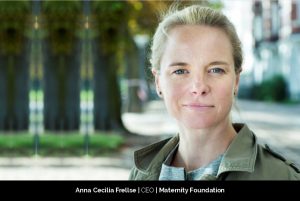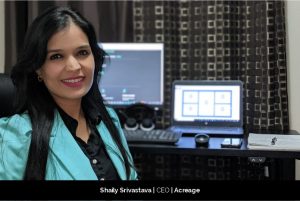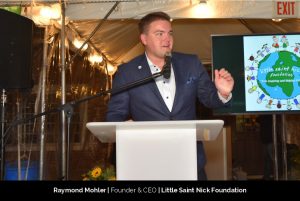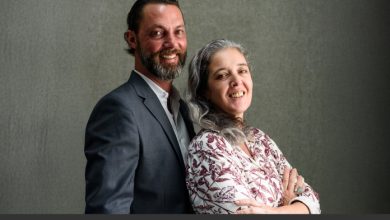Mark Stokes and Dr. Thomas Clayson: Restructuring the spacecraft industry with Magdrive Ltd.
Top 10 Most Inspiring CEOs to Watch Out For in 2022

Inspired by sci-fi movies and realizing the
potential in the field to innovate new and better things, Mark Stokes and Dr.
Thomas Clayson co-founded Magdrive to open the land of new opportunities.
Mark adds, “Our imagination was so much
further ahead, but it all felt doable! When Thomas and I started bouncing ideas
off each other at Imperial, we wanted to solve the biggest bottleneck in
space-propulsion, to enable an entirely new existence in space.”
Behind the curtains
Being inspired by the Star Trek movies,
Thomas understood the potential of the spacecraft industry. He felt that there
were a lot of things left to invent, and with the proper technology, they can
explore the vast boundaries of space.
He completed his undergraduate and Ph.D. at
Imperial in plasma physics. Following his Ph.D., he worked at First Light
Fusion, where he helped design and build their flagship fusion research
machine, the largest pulsed power machine in Europe. He adds, “My greatest
personal achievement is definitely my Ph.D. It was a four-year test of
determination, but an amazing experience that shaped me as a person.”
Mark first studied Classics at university,
and he was struck by the achievements of people who lived 2000 years ago that
still affect the modern-day. While completing his engineering, he realized the
gap between the things left to invent and the ones that were invented. With the
spirit to transform the industry and mark his presence, he collaborated with
Thomas and co-founded Magdrive.
Learning lessons and structuring their
way
Both state that they dabbled in a few side
hustles in the past whilst working in their main day jobs. However, they
learned very quickly that to invent something in transforming, they have to
commit all their time and resources to their prime aim.
Thomas worked on the theory of an
electrical rocket large enough for manned transport, but he kept facing
technological hurdles. With Mark, he found a partner to bounce off ideas.
Mark suggested to dream a little bit
smaller first and design a thruster for satellites, which was a perfect
industry for them to start with due to its current size and forecasted growth.
Both felt more comfortable with jumping off
the deep end, quitting their jobs, and setting up Magdrive. They state, “It has
been an incredible 12 months since we incorporated. We’ve managed to secure
investment much quicker than anticipated, build a core team and move to a
proper lab. We now have all the resources we need to develop a prototype that
will work in space!”
Bringing a change in the industry with
Magdrive
As satellites are evolving to be smaller
and agile, the development of non-chemical propulsion technology to serve them
effectively has not kept up.
From a total of 385 small satellites
launched in 2019, it is expected that over 6000 will be launched in 2023,
including SpaceX’s Starlink and Amazon’s Project Kuiper. There will be
exponential growth in satellites orbiting the Earth, which leads to the big
issue of space junk and collisions. This is escalating the risk of potential collisions.
Even with the collision detector, the
system will soon become overwhelmed by the huge increase in traffic, and the
number of last-minute collision detections will rise.
Both states, “Current propulsion systems
cannot achieve the high thrusts needed for a last-minute avoidance, and doing
this often means that a lot of fuel is used up just on avoiding junk. A
Magdrive will be able to perform this maneuver, time and time again when
needed.”
Magdrive’s miniature thruster burns 100
times hotter than existing rockets that are contained by a unique magnetic
field topology that confines a high-density plasma.
Its thrust and efficiency ratios are a
technological leap ahead of any other existing electrical thrusters, which
opens up the satellite industry to completely new types of space missions that
were not possible before without resorting to much larger, expensive, and
heavier chemical thrusters.
Mark and Thomas express, “The space
industry is a closely-knit group, of which we are already embedded in. We’re
continuing to making steps to further integrate with the community’s sphere of
influence. This involves building our presence in the community by being
visible at events and conferences and building an ongoing relationship with the
media and our future customers.”
Life as CTO and CEO for Thomas and Mark
Being the CTO of the company, Thomas
oversees the technology development. He states, “As we’ve expanded, this has
changed from doing everything myself to instead facilitating and supporting our
incredibly talented engineers. A lot of my time is focused on company building,
growing the team, securing funding, acquiring equipment, and interacting with
future customers.”
As the CEO of the company, Mark has a hold
on everything that is not related to technology. He adds, “I make sure we get
things done according to our overall roadmap, talking to potential investors,
seeking funding through grants, and finding potential customers. I’m also
working to raise Magdrive’s profile wherever I can with publications, articles,
podcasts. I’m still an engineer at heart, so I like to get back into the
technical work when I can!”
Both of them take their employees as a
well-knitted team. They allow them to work in their own space and contribute to
the vision of the company in the best possible ways. They want this to be the
last job for everyone because eventually, no one will know more about the
Megdrive than the foundational team who got it into space.
Achieving work-life balance together
Mark and Thomas believe that to achieve new
heights and build a transforming technology, they have to invest a lot of time
in the work with their team. Still, they understand the need for off-time and
motivate each other to take a rest on the weekends.
This off-time allows them to recharge their
batteries and take the upcoming challenges with positive energy. With COVID
restriction, they work from their home, connect with their teams to get
feedback, and help each other with their issues.
Future plans for Magdrive
Both the co-founders state, “Just as the
jet engine transformed aviation, Magdrive will be the catalyst for a new space
age. Building a presence in the satellite industry is our first phase. Our next
phase will be scaling up the technology for much larger manned spacecraft with
performances that are comparable to chemical and nuclear thrusters, but without
the hazardous drawbacks that chemical and nuclear options have as we are a
renewable and electrical solution.”
They are targeting to build a technology
that will enable new missions in space that aren’t possible right now with
existing propulsion. They aim at transforming space for the benefit of people
on Earth.





